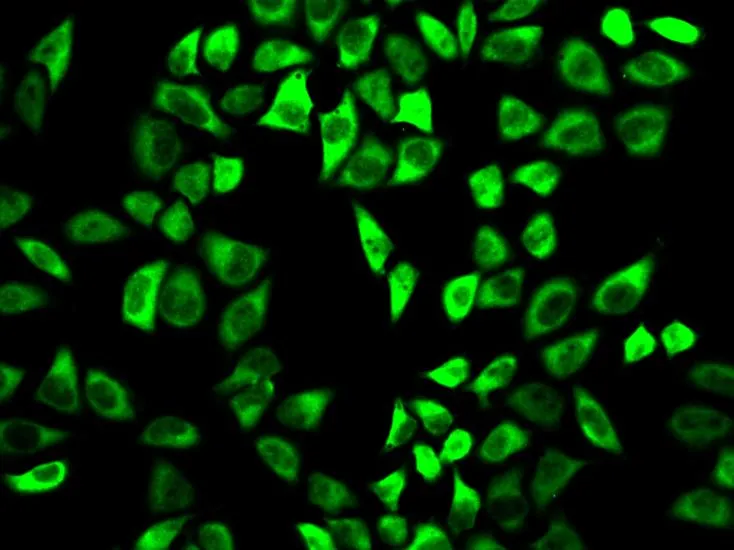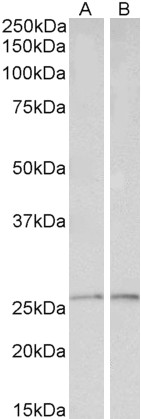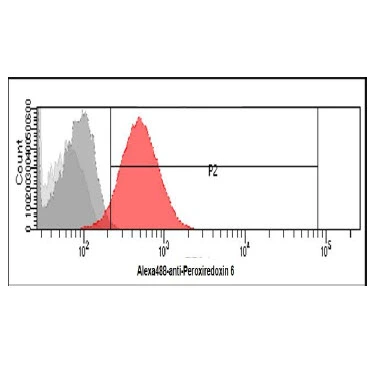
WB analysis of various sample lysates using GTX32779 Peroxiredoxin 6 antibody. Dilution : 1:1000 Loading : 25microg per lane
Peroxiredoxin 6 antibody
GTX32779
ApplicationsImmunoFluorescence, ImmunoPrecipitation, Western Blot, ImmunoCytoChemistry
Product group Antibodies
ReactivityHuman, Mouse
TargetPRDX6
Overview
- SupplierGeneTex
- Product NamePeroxiredoxin 6 antibody
- Delivery Days Customer9
- Application Supplier NoteWB: 1:500 - 1:2000. ICC/IF: 1:50 - 1:200. *Optimal dilutions/concentrations should be determined by the researcher.Not tested in other applications.
- ApplicationsImmunoFluorescence, ImmunoPrecipitation, Western Blot, ImmunoCytoChemistry
- CertificationResearch Use Only
- ClonalityPolyclonal
- ConjugateUnconjugated
- Gene ID9588
- Target namePRDX6
- Target descriptionperoxiredoxin 6
- Target synonyms1-Cys, AOP2, HEL-S-128m, LPCAT-5, NSGPx, PRX, aiPLA2, p29, peroxiredoxin-6, 1-Cys PRX, 1-Cys peroxiredoxin, 24 kDa protein, LPC acyltransferase 5, acidic calcium-independent phospholipase A2, antioxidant protein 2, epididymis secretory sperm binding protein Li 128m, glutathione-dependent peroxiredoxin, liver 2D page spot 40, lyso-PC acyltransferase 5, lysophosphatidylcholine acyltransferase 5, non-selenium glutathione peroxidase, red blood cells page spot 12
- HostRabbit
- IsotypeIgG
- Protein IDP30041
- Protein NamePeroxiredoxin-6
- Scientific DescriptionThe protein encoded by this gene is a member of the thiol-specific antioxidant protein family. This protein is a bifunctional enzyme with two distinct active sites. It is involved in redox regulation of the cell; it can reduce H(2)O(2) and short chain organic, fatty acid, and phospholipid hydroperoxides. It may play a role in the regulation of phospholipid turnover as well as in protection against oxidative injury. [provided by RefSeq, Jul 2008]
- ReactivityHuman, Mouse
- Storage Instruction-20°C or -80°C,2°C to 8°C
- UNSPSC12352203





